Incredulous India
To brand a nation that has lost countless lives to terrorism as a terrorist state, its a blatant twisting of the truth

In 1991, Rajiv Gandhi was assassinated by a suicide bomber representing the banned separatist organization, Liberation Tigers of Tamil Eelam (LTTE). Subsequently, 21st May was declared Anti-Terrorism Day in India. A day dedicated topromoting peace through awareness and education by conducting trainings and workshops to curb the spread of terrorism. The 1991 assassination, however, was not the first time a terroristattack (even in the modern sense of the word),had occurred in India.
The first Indo-Pak War was fought from 1947 -1948 over the Princely State of Jammu and Kashmir, marking the birth of separatist movements and militant groups in the country, regardless of alleged external support. Insurgent groups in the Northeastern states have fought for greater autonomy since the 1970s. The Meenambakkam Bombing was yet another terror attack by the Tamil Eelam Army in 1984. A plethora of terror incidents to draw from, in particularthe Bombay Bombings (1993) followed by the post 9/11 attacks (Indian Parliament Attack (2001), Mumbai Train Bombings (2006) and Mumbai Attacks (2008).
Across the border, Pakistan too has bledin its fight against terrorism -losing more than 70,000 (The South Asia Terrorism Portal) people to terrorist incursions, regardless of who’s “war” was/is being fought. The fallout from the Afghan conflict in the late 70’s and 80’s sowed the seeds of extremism. Since then, not only has Pakistan fought homegrown militant groups but faced the reality of sectarian violence and weathered the storm of insurgencies with outside influence.
The sacrifices of the soldiers, the unwavering spirit of the people facing a very real threat to life and the resulting heavy toll on the economy are undisputed facts. To brand a nation that has lost countless lives - both civilian and military - to terrorism as a “terrorist state” isn't just insensitive; it’s a blatant twisting of the truth. An example of 2009, Pakistan’s worst hit year, with 2,586 terrorist, insurgent and sectarian related incidents reported, killing 3,021 people and injuring 7,334 according to the “Pakistan Security Report, 2009” published by the Pak Institute for Peace Studies (PIPS). Armed with decades of such experience, in the immediate aftermath of the Pahalgham attack, Pakistan volunteered to allow an independent investigation into the matter; a call that fell on deaf ears.
While the fight for terrorism within the two neighbouring countries is alive, it is rife with contentious statements of the other country’s deep state machinations. The age-old blame game gives birth to patriotic fervor, which has sky rocketed post the latest skirmish in the decades long Indo-Pak conflict.Said patriotismin Pakistan played out with an explosion of nihilistic memes and TikTok videos taking jabs at our institutions and the neighbouring state machinery in equal parts. Another extreme, however, was on full theatrical display in India with calls for the annihilation of the state of Pakistan, fueled fervently by the national media itself. Suffice it to say, the root cause being the rise in tensions. What has also been on therise is Hindutva nationalism in India since Modi’s election in 2014. The extreme hate for the Muslims, especially in Pakistan stems from a narrative that is very old and equally dangerous.
The term “Hindutva” was coined by Vinayak Damodar Savarkar in his writings, through which he changed the narrative Swami Vivekanandaestablished in late 1800s where Vivekanandastatedthat Hinduism was the only universal religion. Savarkar then traced the word Hindu to not be inclusivist, but exclusivist in nature. He prescribed that there are three essentials to Hindutva – a common nation, a common race and a common civilization in turn - making religious belief and practice secondary in nature and thereby excluding Muslims and Christians altogether.
M.S. Golwalker, a prominent advocate of the Rashtriya Swayamsevak Sangh (RSS), further exploited the ever evolving Hindudtvaideology by declaring that Hindus came “into this land (Hindustan) from nowhere, but are indigenous children of the soil always, from times immemorial and are natural masters of the country specifically referencingthe example of Nazi Germany and how it had shown that it was impossible for “for Races and cultures, having differences to the root, to be assimilated into one united whole, a good lesson for use in Hindustan to learn and profit by.”
The RSS is the ideological mentor of The Bharatiya Janata Party (BJP). Not surprisingly then, the recent attack on Pakistani soil, killing civilians, including two children by attacking civilian areas in the dead of the night has been dubbed by many as anattack reminiscent of the Israeli tactics being used in Palestine. Equally preposterous, and again seemingly taken directly from the Israseli textbook was the justification peddled out, when the Indian representatives, both state and media, deemedall the civilian casualties as terrorists, even children. Hence, hateful tweets from the Indian citizenry followed – one such asking for Pakistan to be flattened just like Gaza.
What then, one may ask, is the significance of 21st May when the BJP and the ruling class presents terror and hate in the mainstream? To see the practical effects of such hateful rhetoric, one does not need to go too far back. The 2002 Gujrat massacre holds all the key elements of terrorism, played out under Modi, Chief Minister at the time, whose controversial role in the incident itself has been widely debated. So much so, he was even denied visa to the United States in 2005, reportedly based on serious concerns surrounding human rights issues. Bilawal Bhutto’s words, if ever appropriate, certainly may be used in this context, “Osama Bin Laden is dead, but the butcher of Gujrat lives. And he is the Prime Minister of India”.
What then does the future hold for the new Hindutva-led Bharat and subsequent Indo-Pak relations?

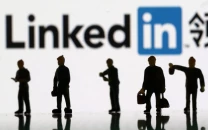

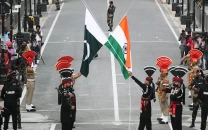
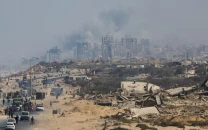


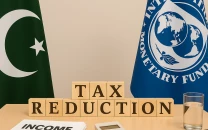
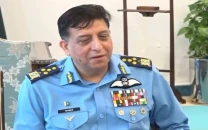
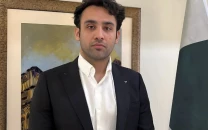

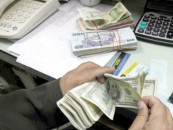





COMMENTS
Comments are moderated and generally will be posted if they are on-topic and not abusive.
For more information, please see our Comments FAQ